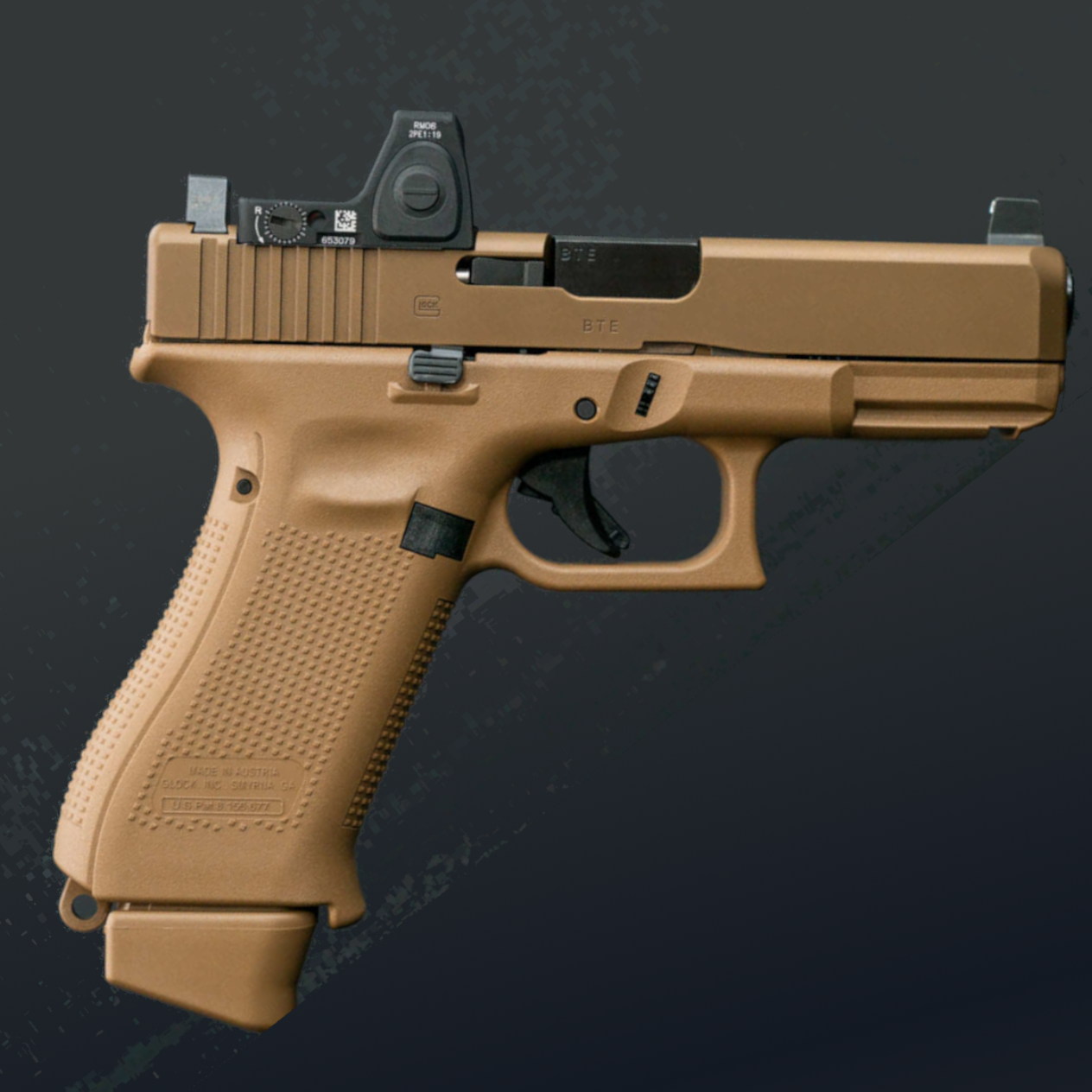Totally off the wall question, which I realize probably isn’t very meaningful, but I was watching a movie where a character was using a suppressed rifle. Looked like an AR/.223 (I assume).
Well it got me thinking - how much can a given gun be suppressed (decibel reduction) before performance is significantly reduced (I assume it must impact performance, even if just a little since it’s attenuating sound waves, which are energy, but what do I know?).
I’m sure it varies by round/load, barrel length, etc, so let’s assume a subsonic .223 round in a 14" barrel (is that a common lenth?). Or if you know a specific case that’s fine too.
Surely there are reasons why a given suppressor is chosen for a specific use case, and I don’t know enough to see that (diminishing returns for length/weight?)
I tried asking chatgpt, but it just returned generic suppressor info.
Suppressors generally improve ballistic performance, the tradeoffs are in other areas (weight at the front of the gun making it hard to handle, reduced lifespan of parts due to increased backpressure, and that backpressure also often blasts the operator with a faceful of toxic gasses that increase your risk of cancer)
Suppressors tend to function (in terms of ballistic performance) as a longer barrel, increasing the distance over which expanding gasses can increase the velocity of the bullet before the propelling high pressure gasses can equalize into the atmosphere, and longer barrels do eventually decrease balistic performance, but that’s not generally relevant to the actual barrel lengths people use. No idea how long you’d have to make a barrel to decrease performance, or how that might translate to how long a suppressor would need to be to decrease performance
Level of sound suppression is also usually a function of volume and the suppressor’s design, but volume isn’t the same as length, so that also complicates things
I don’t think the question you asked can really have an actual answer, but hopefully this response and others kinda paint a picture of the kinda stuff you’re generally hoping to learn from this thread :)
I figured the question was kind of “wrong” from my lack of understanding.
The improvement from increased barrel length is a good example of what I don’t know.
Short answer, about 30db give or take a little. My rifles run in the 130db unsuppressed and in the 90db’s suppressed
I’ve heard that the MP5SD (or whatever the actual model is; the MP5 with the built in suppressor) is so quiet, all you really hear is the hammer clicking.
The SF variant of the H&K USP actually has a locking bar to hold the slide closed. Or at least that was one of the production runs, they may have dropped that feature. The intention there is that you want something that’s so quiet that even the slide racking is too much noise. You’d run it with a suppressor and subsonic ammunition.
Effectively it turns it into a manually operated pistol, allowing the user to choose when they chamber the next round.
See the MK22 pistol and modern “hush puppy” slide lock projects
A couple things to note here, but first a caveat: I don’t know the exact answer for how much dB reduction before you see serious degradation in energy but I’ll answer some of the other questions you mentioned.
I wouldn’t say 14” is common, any rifle barrel shorter than 16” is illegal without extra paperwork and a tax stamp and all that (classified as a short barreled rifle). In addition to this, ballistically speaking 16” is a sweet spot for 5.56/.223 so it’s all the more common on top of the legality.
The other thing is that (generally speaking) a suppressor is really just a hollow can with a bunch of angled walls (baffles) to disrupt the airflow, allowing it more time to cool before exiting. Bigger differences in temp/pressure = louder bang, a suppressor reduces this big differential by delaying the exposure, buying time for the gas to expand and cool in a controlled manner as it exits.
So really the longer the suppressor, the more baffles, etc., you will get more dB reduction but you’re also going to start running into problems cycling the rifle. Since you said AR/5.56, you would get to a point where the rifle just doesn’t fully cycle, the bolt doesn’t go all the way back failing to strip another round from the magazine, resulting in a single-shot rifle (shoot, pull charging handle, repeat)
This is a common problem with suppressors and why most suppressor hosts like to have an adjustable gas block for this type of thing.
Surely there are reasons why a given suppressor is chosen for a specific use case, and I don’t know enough to see that (diminishing returns for length/weight?)
Yes, use-cases are important. Suppressors can be used to mitigate multiple signatures like flash and sound, and while length feeds into that, where it’s going to be used matters as well. Tight quarters inside a building vs outside at range, things like that all feed into the right “kit” for the “mission” (but then we get into caliber and grain count discussions)
When you are looking for a suppressor for a rifle, you need to consider the obvious stuff like the caliber and whatnot, but also you need to consider the things like flash hider/suppressor host and the gas settings of the gun, what the buffer weight is in the buffer tube, etc.
For example, a mk18 is considered a very gassy gun, when you slap an SF RC2 or KAC QDSSNT4 on that thing, every pull of the trigger will be spewing a lot of gas in your face from the ejection port and charging handle areas. So is the mk18 a bad gun? No (lmao) it’s a CQB rifle with a short barrel which means less dwell time for the projectile as it is leaving the barrel which means more chance of unburned powder, etc. - I’m hoping you get the picture. It’s a rifle for close-in fighting so you don’t want a long ass suppressor or get gassed out but you DO want to be suppressed indoors.
So what do we do about it? Well suppressors are not all made the same way and relatively recently we’ve been seeing an influx of 3D printed suppressors like the Flow-through cans and they have been a game changer.
Here’s one of the most popular/trusted ones: https://huxwrx.com/flow-556k-suppressor
An innovative multi-caliber suppressor with patented and proven Flow-Through® and Torque Lock® technology. It is designed to reduce signature without negatively impacting cycling or service life. The FLOW 556k is DMLS printed in 17-4 Stainless. It delivers superior toxic fume exposure mitigation, flash reduction, sound reduction, recoil reduction, accuracy, and repeatability by its unique Flow-Through® helical coil and core deflector design. It is full-auto rated and compatible on 5.56, 17 HMR, and 5.7 platforms. The integrated GeoFlash™ Cap geometry effectively mitigates flash as part of its overall signature reduction functionality.
One last thing to note, you mentioned diminishing returns on length/weight, you’re right to think that. As I mentioned length is beneficial for things like dwell time and giving time for the gasses to cool some before exiting but you also have to consider things like a long suppressor starting to sag over time which leads to baffle strikes which will destroy the can.
Ultimately it’s all about the use-case. Every can and can-host has its own quirks, dB level, etc.
HUXWRX sounds like an Amazon brand
Interesting stuff how the mechanics of different gun designs comes into play, and how out-gassing control is a consideration relative to use-case.
Thanks for the info - while I’m great with mechanical stuff, I only have a basic understanding of gun mechanics (which is amazing, like so much engineering with 19th century and earlier origins).
Also, utterly ignoring the noise question, the AR platform has been adapted for almost every caliber. There are straight-wall caliber ARs. I haven’t yet seen one in .50 cal, but I wouldn’t be surprised if someone showed me one.
Point is, you can never guess the caliber of an AR unless you’re looking at old war footage.
Look up .50 Beowulf
There are ways to stop any gas from escaping the barrel, meaning complete silencing of that noise. For example, captive piston ammo, which I bet someone has developed into a captive piston suppressor to let the bullet accelerate longer.
Mechanical and bullet flying noises will remain.
deleted by creator







